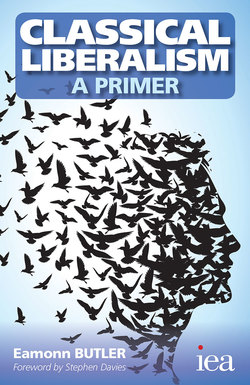Читать книгу Classical Liberalism – A Primer - Eamonn Butler - Страница 7
На сайте Литреса книга снята с продажи.
Introduction
ОглавлениеThe purpose of this book
This primer aims to provide a straightforward introduction to the principles, personalities and key developments in classical liberalism. It is designed for students and lay readers who may understand the general concepts of social, political and economic freedom, but who would like a systematic presentation of its essential elements.
The book takes classical liberalism to embrace a wide spectrum of views, all of which consider individual freedom and the minimisation of violence as their top priorities, but which may range from something near libertarianism at one end to more conservative views at the other. It sees classical liberals as believing firmly in individual freedom, but believing that at least some administration of government and justice is needed to maintain it. The debate, among classical liberals at different points on the spectrum, is how large and wide that government role should be.
Outline of the book
Chapter 2 outlines the ten core principles that unite classical liberals, whatever the differences between them. Chapter 3 then sets out the historical development of classical liberalism, from its Anglo-Saxon roots, through the Reformation, the Enlightenment and revolutions, to its nineteenth-century decline and its modern revival today.
Chapter 4 considers the arguments for freedom, outlining the different and often conflicting views of classical liberals from different traditions. Chapter 5 then looks at classical liberals’ ideas on morality, and the centrality to them of minimising coercion, either from individuals or the state. Chapter 6 outlines the thorny debate on what the role and limits of that state should be. Chapter 7 explains why classical liberals believe that human societies are largely self-regulating and create public benefit without needing any large central authority to maintain them. Chapter 8 shows that this is also true in economics, thanks to the evolution of natural institutions such as markets and prices.
Chapter 9 outlines the recent revival in classical liberal thinking, and some of the new schools of thought that have come up within the classical liberal tradition.
The book concludes with sketches of the contributions of key classical liberal thinkers, some important quotations on classical liberal issues, a timeline of the development of classical liberalism, and further reading.
